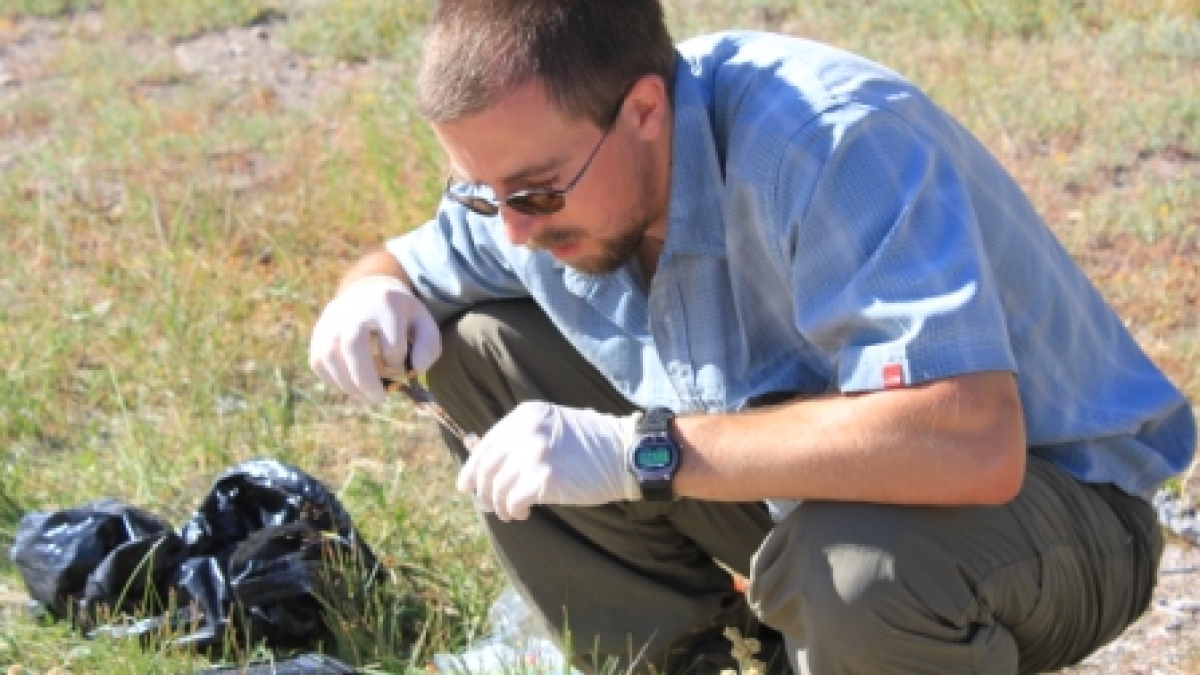Mouse to elephant? Just wait 24 million generations

Just how big can mammals get and how fast can they get there? These are questions examined by an international team of researchers exploring increases in mammal size after dinosaurs had become extinct 65 million years ago.
Research published in the journal Proceedings of the National Academy of Sciences shows that it took about 10 million generations for terrestrial mammals to hit their maximum mass – that is about the size of a rabbit evolving to the size of an elephant.
The interdisciplinary team of 20 biologists and paleontologists was led by Alistair Evans, a research fellow at Monash University (Melbourne, Australia), and included Jordan Okie, an exploration postdoctoral fellow at ASU’s School of Earth and Space Exploration.
The team also discovered that it took only about 100,000 generations for very large decreases, such as extreme dwarfism, to occur.
“The new method we developed allowed us to quantitatively demonstrate a fundamental asymmetry in macroevolution that has long been suspected: that large decreases in sizes can occur much more quickly than large increases,” says Okie, who investigates the constraints on the evolution and distribution of metabolic diversity, the diversity of metabolic pathways and lifestyles employed by living organisms.
“Our work demonstrates, for the first time, how quickly the major changes in body size have happened in the history of mammals,” says Evans, an evolutionary biologist.
“Most previous work has focused on microevolution, the small changes that occur within a species,” Evans says. “Instead, we concentrated on large-scale changes in body size. We can now show that it took at least 24 million generations to make the proverbial mouse-to-elephant size change – a massive change, but also a very long time.”
The research team looked at 28 different groups of mammals from the four largest continents –Africa, Eurasia, and North and South America – and all ocean basins during the last 70 million years. These groups included elephants, rhinos, hippos, carnivores and whales.
When they looked at whales living in the sea, they found that it took only half the number of generations to change the same amount.
“This is probably because it’s easier to be big in the water – the water helps support your weight,” says Erich Fitzgerald, a curator in paleontology at Melbourne Museum and a co-author on the study.
Researchers were surprised to learn how quickly body size decreases – more than 10 times faster than it increases.
“The huge difference in rates for getting smaller and getting bigger is really astounding. We certainly never expected it could happen so fast!” said Evans, who is an expert on the evolution of mammals. “These miniature animals include many on islands, such as the dwarf mammoth, dwarf hippo and dwarf ‘hobbit’ hominids, found in the Indonesian island of Flores. “Why did they all get so much smaller? When you do get smaller, you need less food and can reproduce faster, which are real advantages on small islands,” Evans added.
“Through an elegant mathematical solution, we also developed a new method for investigating dynamics in the evolution of body size,” Okie said. “The method addresses a previously unanalyzed issue and is straightforward for scientists to adopt in their own research.”
Researchers used number of generations instead of years in their study because species have different lifespans. Small mammals do not live as long but reproduce faster than larger mammals, so using generation time allowed the researchers to compare the rates of evolutionary change among very small and very large animals.
This research will help scientists to better understand mammal evolution: what conditions allow certain mammals to thrive and grow bigger and what conditions would slow the pace of increase and potentially contribute to extinction.
Understanding the evolution of metabolic diversity also is of relevance to astrobiology and the biogeosciences because metabolism sustains life’s complex physiochemical structures and it governs the biochemical transformation of geological systems.
The work was funded by a research coordination grant from the National Science Foundation.